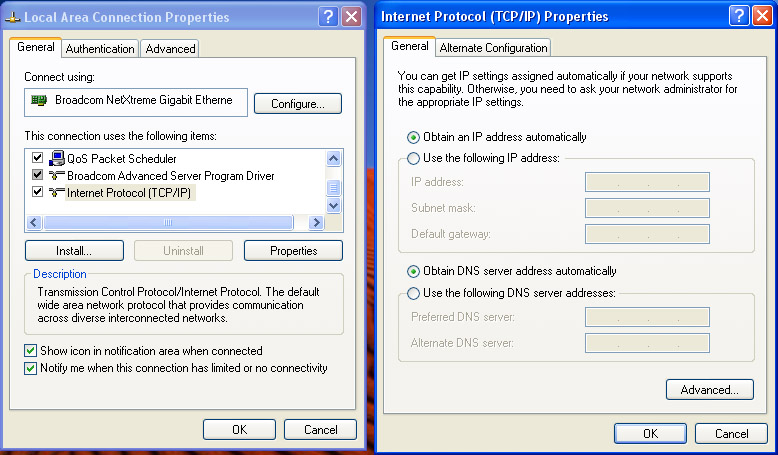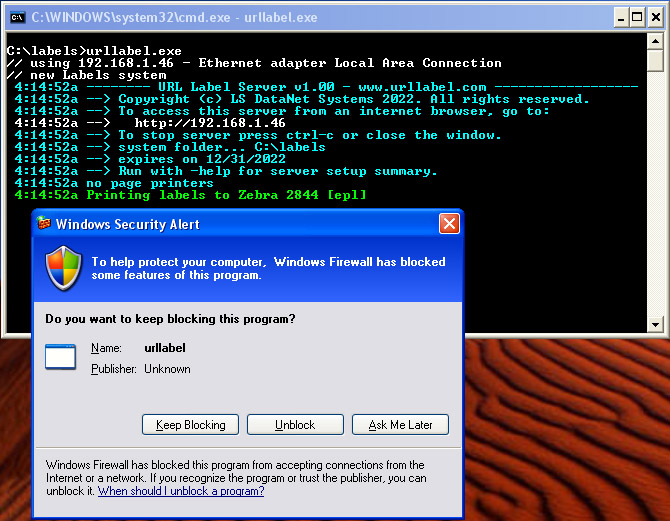
Static IP address vs. DHCP
The computer running the URL Label server should have a
static ip address (unchanging) so it is easy for users to find.
If the computer running the URL Label server is DHCP that
will cause the ip address to change after the computer gets rebooted.
Check with your network personnel if you want to go from using
DHCP to a static ip address to better support your label printer.
The price of being a LAN based server is using a static address,
which in this case is free.
You can still run the URL Label server on a computer using DHCP, especially for testing. But you will have to use the new ip address after each reboot, which is inconvenient. Here is an example of a Windows computer that is running DHCP. After modifying the properties on the network adapter and clicking on "Internet protocol (TCP/IP)", the window on the right appears showing it is set to "Obtain an IP address automatically", which is DHCP in understandable language.

Command line viewing of IP address
You can view the IP address(es) your computer is using by
typing ipconfig (ifconfig on Linux) into the
command line.

Specifying the IP address
The URL Label server automatically selects the IP address.
Some computers have more than one IP address.
In that situation the URL Label server may automatically select
an unintended IP address (ex: wifi adapter instead of LAN).
There are three ways to override automatic IP address selection.
Firewall
The firewall doesn't apply to the computer running
the URL Label server. That computer can freely access
the URL Label server and can be used to confirm it is working
properly.
But other computers and devices on the network can't access the URL Label server unless the port it is running on has been "opened" using the firewall. Windows prompts you the first time you start the URL Label server asking if you want to do that. Whereas, firewall configuration on Linux varies and you will need to know how to configure your system so the firewall allows access.
Here is an example of the Windows firewall appearing after the very first time the URL Label server is started, if you have administrative authority. Click Unblock to allow access to other network computers and devices.

If you don't have administrative authority then you will see this window. Clicking "for this program, don't show this message again" doesn't allow access by other network computers and devices, but it does make the box go away. You will still be able to print labels from the computer running the URL Label server. You will need to log in with Administrative privileges or get your network personnel to open the firewall (in the Windows control panel) if you want to allow others to print labels using your URL Label server.
https
It is expected that the URL Label server will be a LAN/wifi
local area application rather than being used across the Internet.
If you are a 1000 miles away it makes it hard to pick up your label.
In a secure LAN environment, use of http to print labels makes
installation much easier and is not a security threat.
But surely there are users who have a reason to implement https, which the URL Label server supports. One reason would be to allow users to print labels through a domain name rather than an IP address, avoiding the need to connect to the local wifi system. Here is a brief summary of the steps needed to get the URL Label server to run https using Let's Encrypt certificates.